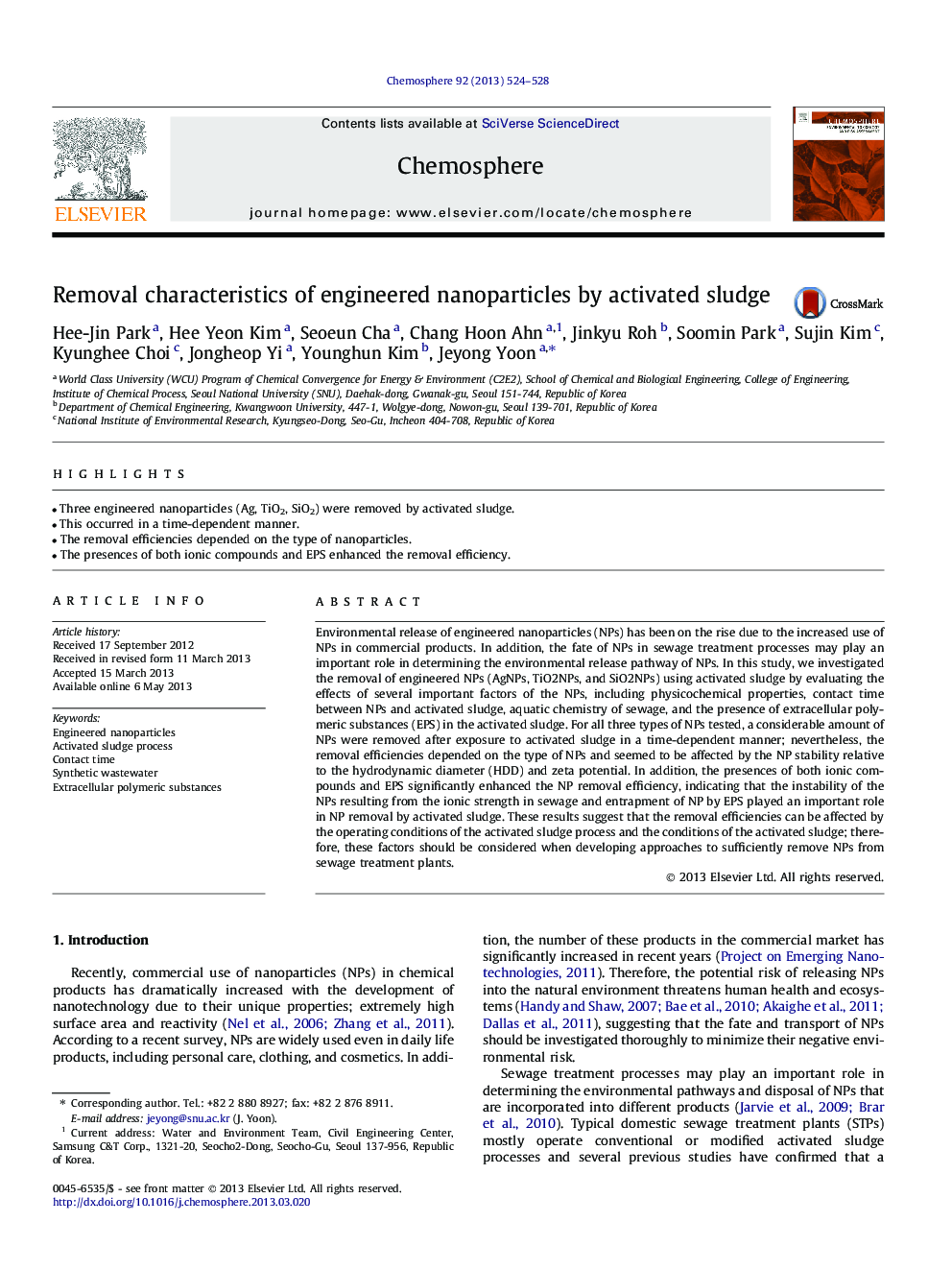| Article ID | Journal | Published Year | Pages | File Type |
|---|---|---|---|---|
| 6310444 | Chemosphere | 2013 | 5 Pages |
Abstract
Environmental release of engineered nanoparticles (NPs) has been on the rise due to the increased use of NPs in commercial products. In addition, the fate of NPs in sewage treatment processes may play an important role in determining the environmental release pathway of NPs. In this study, we investigated the removal of engineered NPs (AgNPs, TiO2NPs, and SiO2NPs) using activated sludge by evaluating the effects of several important factors of the NPs, including physicochemical properties, contact time between NPs and activated sludge, aquatic chemistry of sewage, and the presence of extracellular polymeric substances (EPS) in the activated sludge. For all three types of NPs tested, a considerable amount of NPs were removed after exposure to activated sludge in a time-dependent manner; nevertheless, the removal efficiencies depended on the type of NPs and seemed to be affected by the NP stability relative to the hydrodynamic diameter (HDD) and zeta potential. In addition, the presences of both ionic compounds and EPS significantly enhanced the NP removal efficiency, indicating that the instability of the NPs resulting from the ionic strength in sewage and entrapment of NP by EPS played an important role in NP removal by activated sludge. These results suggest that the removal efficiencies can be affected by the operating conditions of the activated sludge process and the conditions of the activated sludge; therefore, these factors should be considered when developing approaches to sufficiently remove NPs from sewage treatment plants.
Keywords
Related Topics
Life Sciences
Environmental Science
Environmental Chemistry
Authors
Hee-Jin Park, Hee Yeon Kim, Seoeun Cha, Chang Hoon Ahn, Jinkyu Roh, Soomin Park, Sujin Kim, Kyunghee Choi, Jongheop Yi, Younghun Kim, Jeyong Yoon,
